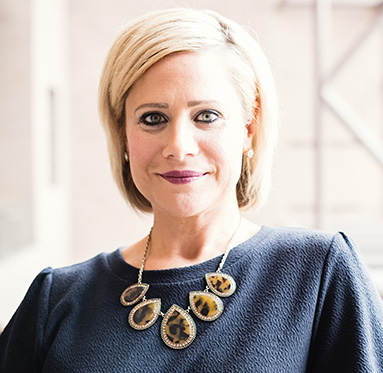January 7, 2020
At the 2019 annual Women’s Leadership Conference of Northeast Ohio, I had the honor of speaking to hundreds of women about the impact nonverbals can have on your personal brand. I book at least a few speaking gigs a year, but the reaction to my presentation at this event was different than I’d ever experienced. Within a week of the event, I had three additional speaking gigs, a barrage of LinkedIn requests and an abundance of Twitter and Facebook messages lauding my session.
Honestly, I was a little surprised by the extent of the positive feedback…and I wanted to figure out how I could recreate that magic.
So I took a step back to think about what made this presentation unlike others I’d delivered. After some reflection, I identified these three guidelines for a great presentation.
Make it unexpected & fun.
Don’t get me wrong, I always bake some fun and jokes into my presentations. But this session was different. Each slide used several funny GIFs to illustrate my points. Using GIFs kept the audience engaged and entertained from start to finish, as they were waiting to see which GIF would be revealed next. Am I suggesting you use this approach for your next presentation? Not necessarily. But I now know I will absolutely, positively always work toward a presentation format that I know appeals to and engages the audience in a way they might not expect ― particularly at a professional development or work-related function. Making it fun also makes it relatable and memorable.
Use a designer.
This is a big one. I shared my vision for my presentation with one of the graphic designers in our office, and he took that vision and made it something better than I imagined. My PowerPoint skills are limited at best, and I certainly could have never made the presentation “pop” without the support of a design professional. (For previous speaking gigs, I mostly relied on interns or administrative staff to help with my decks.) What also worked for me was meeting with the designer at the outset – before the content was fully developed – so we could work in partnership to develop a presentation template and style that amplified my words. I can’t emphasize this point enough: Use a design professional when you’re giving a presentation – whether it’s a presentation to your team, your Board, your customers or your prospects. That professional polish makes a big difference and a big impact.
Incorporate video.
I used a couple of short videos to illustrate points in a way that simply talking to the concepts wouldn’t have accomplished. Videos can be powerful storytelling tools. For example, one of the concepts I talked about was uptalk, a manner of speaking in which statements sound like questions (which ultimately diminishes credibility). This video illustrated the concept of uptalking better than I could have done simply by talking about it. It also gave me a respite to collect my thoughts for the remainder of the presentation ― and gave the audience a break to focus their energy on someone other than me. For your next presentation, think about whether an explainer video, product demo or news clip better conveys a concept. One huge caveat when using video: It’s critical to test videos prior to your session to make sure the video doesn’t buffer, ads don’t pop up or the sound isn’t muted during your big presentation moment.
Whether you’re on the speaking circuit or not, you can use these suggestions for any presentation you give internally or externally. Try to incorporate one or more of these tips into your next presentation and see how it works for you. Drop me a line to let me know about your experience (or to talk about how we can add design magic to your next presentation!).


